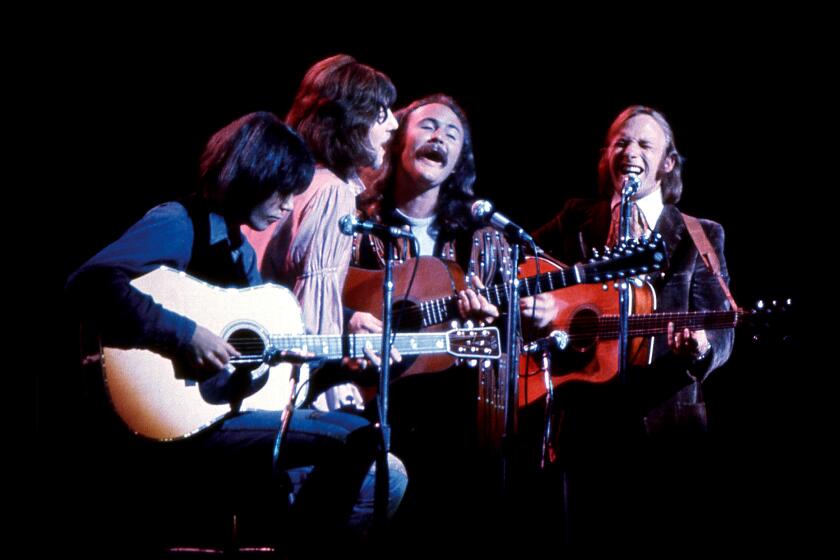ART REVIEW : USING THE COMICS FOR PLAYFUL ART
- Share via
The large exhibition of many small works now at UC San Diego’s Mandeville Gallery represents the spirit of a community of New York artists and writers as well as the talent of one man. Not coincidentally, the whole is greater than the sum of its parts.
The exhibit represents nearly half of the 300 works from the Butts Collection at UCSD Library, which consists for the most part of works by artist and writer Joe Brainard.
The Butts Collection is part of the Mandeville Department of Special Collections’ Archive for New Poetry, one of the nation’s most comprehensive collections of English-language poetry published since 1945.
Brainard, who was born in Arkansas in 1942 and raised in Tulsa, Okla., has lived in New York City since 1961. The exhibit surveys two decades of the artist’s work, much of which was collaborative. He has worked with a “Who’s Who” list of contemporary poets, including Frank O’Hara, John Ashbery, Ted Berrigan, Bill Berkson, Kenward Elmslie, Ron Padgett, Anne Waldman, Kenneth Koch and Robert Creeley, providing dust jacket designs as well as illustrations.
Brainard’s works are playfully engaging rather than emotionally involving or intellectually challenging. He has a penchant for using found images (specifically comic strip characters) as well as found materials in collages and assemblages, those art forms par excellence of modern urban culture.
A favorite subject is the cartoon figure “Nancy,” the chubby little toughie with a hairdo like a helmet made of beaver fur and a bow in her bangs. In one wild series of ink and gouache drawings titled “If,” she appears in art nouveau style as an ashtray, a terrible disease, a sexy movie star, an acid freak, a boy, a DeKooning-style figure and much else. She not only appears again as an ersatz DeKooning in colored pencil and in an etching, but also as a Da Vinci drawing.
Brainard uses the characters of Archie, Betty and Jughead in a mildly pornographic series. Dick Tracy, Little Orphan Annie and Jiggs make “cameo” appearances in other works.
Such a use was scarcely innovative, since Warhol and Lichtenstein preceded Brainard in using comic strip images in New York. And San Francisco Bay Area artist Jess may have preceded them all with his cartoons. Some male readers will remember that what we used to call “Tijuana bibles” antedated all of them.
A collage such as “Dancing Tulips” is visually appealing, as is the richly colored, densely composed collage “Butterfly Madonna.” The craftsmanship of the former is indifferent, however, and the sophistication of the latter does not approach the work of Jess.
Complex assemblages such as the “Hampton Beach Constructions” evince Brainard’s imaginative use of found items and passion for pattern. In a number of works in a variety of media--assemblage, painting, etching--he even makes cigarette butts visually engaging.
The most aesthetically satisfying, perhaps because most personal and unalloyed with humor, are several pencil drawings of friends, including poet Anne Waldman and painter Alex Katz. “Bill Elliot,” however, has a magical sense of presence among the works.
Brainard does not dissimulate the “gay” content in his work, but no one, not even the writers of the several brief essays in the catalogue accompanying the exhibit, mentions it. It appears both overtly in erotic drawings and allusively in “camp” humor.
The exhibit has a gentle charm. It gives the same sort of pleasure as rummaging in the attic of a favorite relative. The show runs through March 22.
More to Read
The biggest entertainment stories
Get our big stories about Hollywood, film, television, music, arts, culture and more right in your inbox as soon as they publish.
You may occasionally receive promotional content from the Los Angeles Times.










